Finger Foods For Your Little One


At the age of 6 to 12 months, your little crawler will start developing their fine motor skills known as palmar grasp and pincer grasp that will allow you to add finger foods into their diet. Finger foods are any bite-size, easy-to-eat piece of food that your little one can pick up and eat on their own to practice self-feeding. Introducing finger foods is an important step toward independence to help them develop their fine motor skills and coordination. You may have tons of questions coming up next, such as, how do you know if your little one is ready for this? How do you start? How much should you be feeding? and many more! Continue reading this article to find out everything you need to know about finger foods.
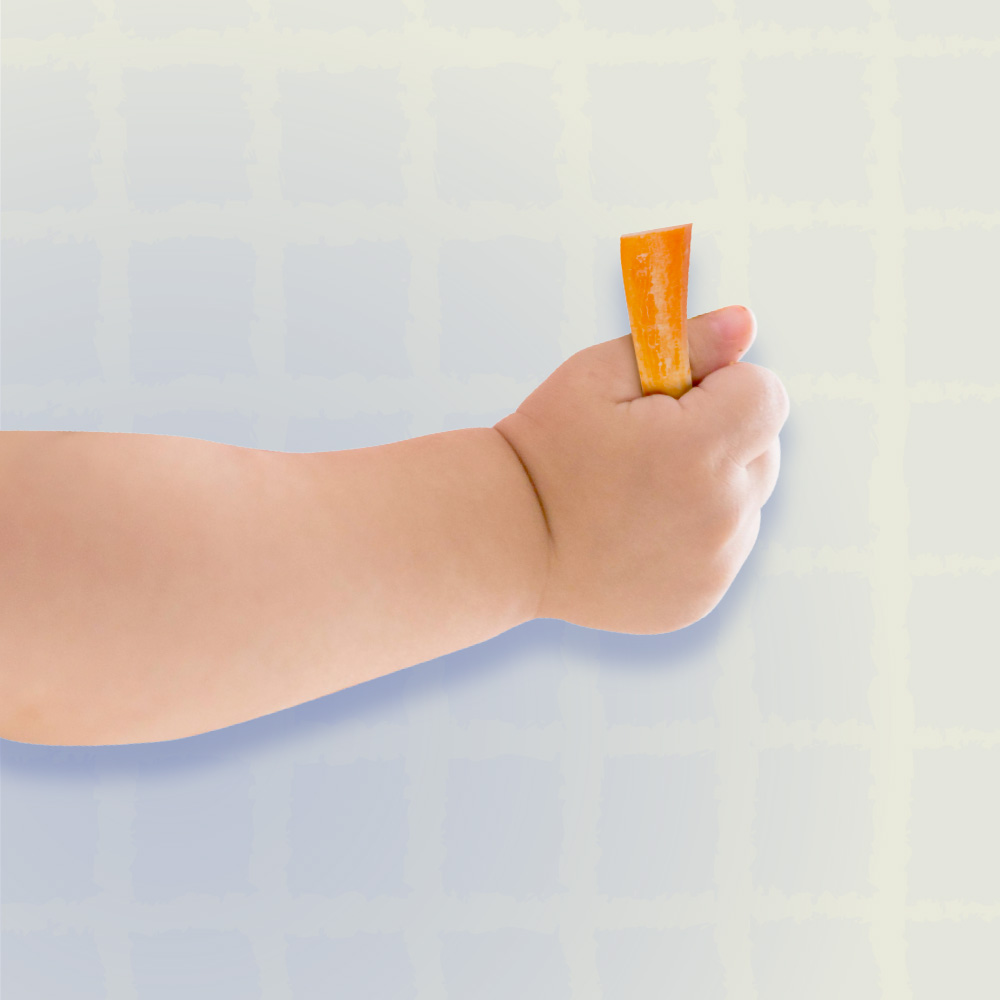

Palmar Grasp
For 6 – 8 months little ones, generally use their whole hand to pick up food, this means they hold a piece of food by closing their whole hand. This is known as the palmar grasp.
As this grasp involves all four fingers curling around the food and the thumb tucked within the palm, the shape of the food is best to be 5 – 8 cm long strip or the size of two adult fingers. Stick-shaped foods will be the best option for palmar grasp as most of the food will be in the palm of their hand and a small portion of food will stick out of the top of their hand, which is what they will be chewing on.
Pincer Grasp
For 9 – 12 months little ones, they are able to pick up smaller pieces of food, this means they will use their thumb and forefinger to pick up food and feed themselves. This is known as the pincer grasp. Pea-sized foods, such as the Gerber Organic Puffs will be the best option for them to straighten and curl their thumb and first two fingers around a small piece of food.
During this time, you can continue to offer your little one a combination of both larger, stick-shaped pieces of food and smaller, pea-sized shaped of food, as your little one will switch between using palmar and pincer grasp when self-feeding.
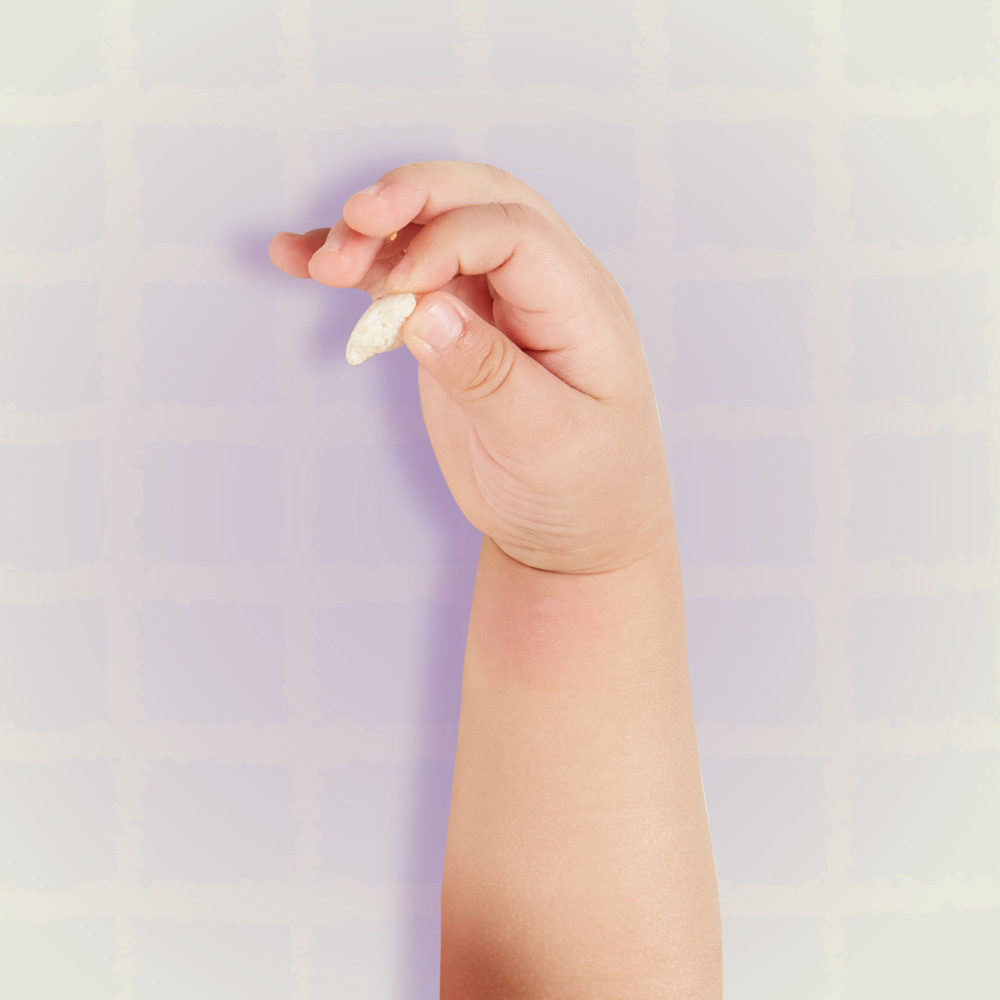

When to start finger foods
Typically, you can start introducing finger foods to your little one once they have mastered purees. This will be usually between 6 to 9 months of age. However, the exact age will vary as this will be different for all little ones and depending on the feeding approach you use.
Some parents will choose to follow the baby-led-weaning approach where spoon-feeding phase is skipped and straight to introducing finger foods once little one is ready. Some parents will choose to follow the traditional weaning approach where spoon-feeding purees will be introduced first, then follow by finger foods after purees are mastered. Some will choose to go with a combination of both approaches so there is no exact right time when to start finger food.
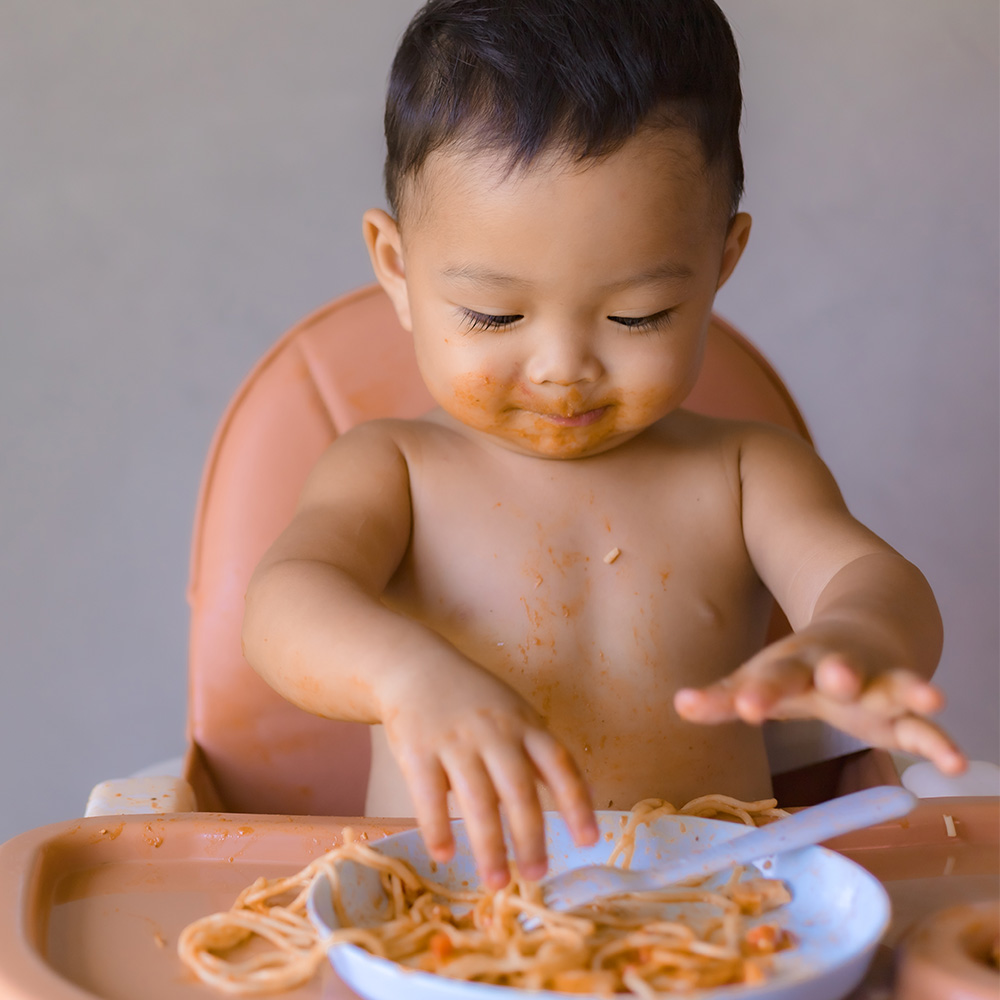

Regardless of the different feeding approaches you use; you should always keep in mind to never start offering finger foods to your little one before 6 months of age. Only start offering when they show signs of readiness. Some signs to look out for are as below:
- Able to sit up independently without support and hold their head up
- Having good control over their head and trunk
- Having good control over their hands (bringing hands, toys, anything in sight to their mouth)
- Showing interest in food (reaching for, leaning toward food)
How to prepare finger foods
The general rules when preparing finger foods are ensuring it is easy to eat and safe for your little one to pick up and eat on their own. Here are some of the rules when preparing finger foods:
- Texture: Finger foods need to be soft enough to be able to squish them between your two fingers so that little ones can easily gnaw, suck, chew and move around in their mouths.
- Cooking method: For hard foods such as sweet potatoes, apples, etc., you can steam or roast them to soften their texture. Some foods which are already soft such as avocado, banana, etc. can be served as it is.
- Size: Your little one will achieve different fine motor skills over time, and this is where palmar grasp and pincer grasp come into play. Yeap, these are important milestones in fine motor development that allow your little one to hold food and actually put the food into their mouth! As they develop different fine motor skills at a different age, this would mean the preparation of finger food would have to be a different size and shape too! See below example on how you should cut them according to age.
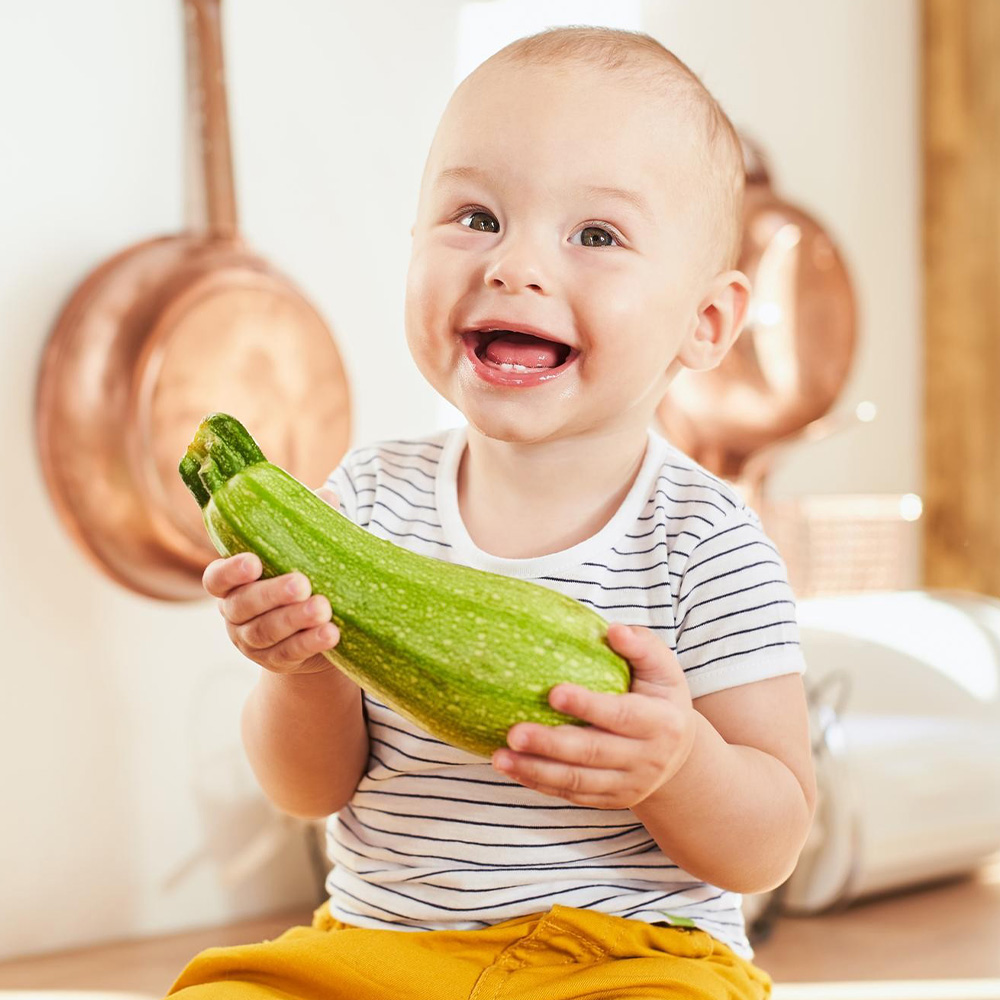

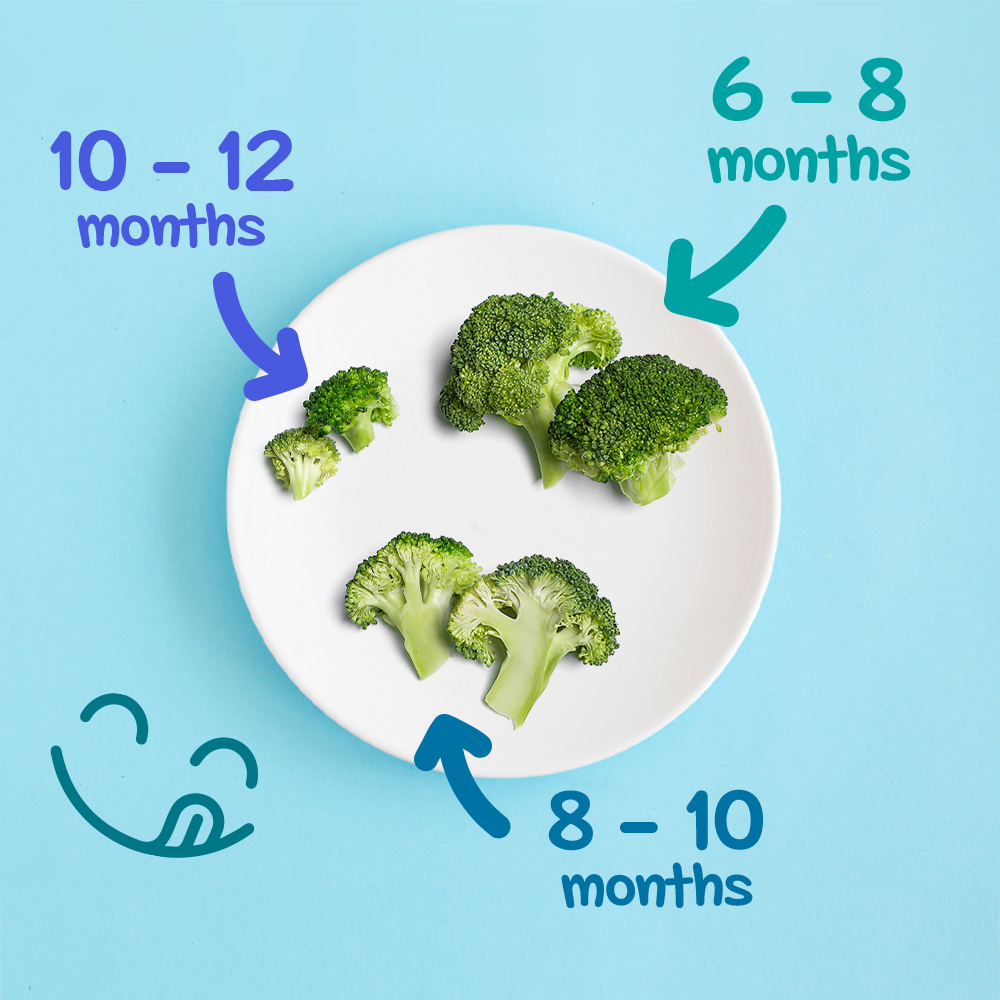

How to start finger foods
Start with food that your little one is already familiar with
If you chose the traditional weaning approach to feed your little one, you can slowly transition by offering a pre-loaded spoon as a start. This will help your little one to be comfortable with self-feeding by offering them puree that they are already familiar with. You can also start with flavours that they are used to, for example, starting off with half of a banana if they like banana puree.
Keep it simple with 1 -3 types of foods at a time
It is true when they say we eat with our eyes as well as our mouths. If you put a large amount of food on their tray or plate, it may be visually overwhelming for our beginner eater. Only start with 1 to 3 types of foods and 1 to 3 pieces of food. You can add more pieces of food as your little one finishes.
Seated on a highchair
Always feed your little one in a highchair rather than in other places, such as car seat or stroller to reduce the risk of choking. Feeding on a highchair ensures they are in an upright sitting position and have good support to their trunk, hips, and feet.
Follow their feeding cues and feed responsively
Let them decide how much they want to eat or not want to eat. This will allow them to develop and express hunger and fullness feelings which will set them up for good eating habits later in life.
Can my little one chew foods without teeth?
You may be wondering how your little one chews on finger foods when they don’t have any teeth. The truth is we chew food with our back molars, and not our front teeth, which our little ones don’t get until they’re 18 to 22 months old! Their strong and super tough gums are what they use to mash, gnaw and chew foods! Yeap, they are stronger than you think, mommas.
How much finger foods to offer?
We understand how worrying it can be when you find pieces of food on the floor or down the chair. You can’t help but worry if your little ones are eating enough especially when it comes to finger foods that you can’t really gauge how much exactly they are eating. As much as you will worry, we are asking you NOT to, because your little one can actually decide how much they want to eat! They will naturally manage their own intake and will stop when full, this is them eating and feeding themselves at their own pace. Do not try to force them to eat more as this will create a negative impact on healthy eating habits later in life. As a parent, we can only ensure that we are offering a variety and well-balanced finger foods for our little ones to get the nutrients they need.
Finger foods


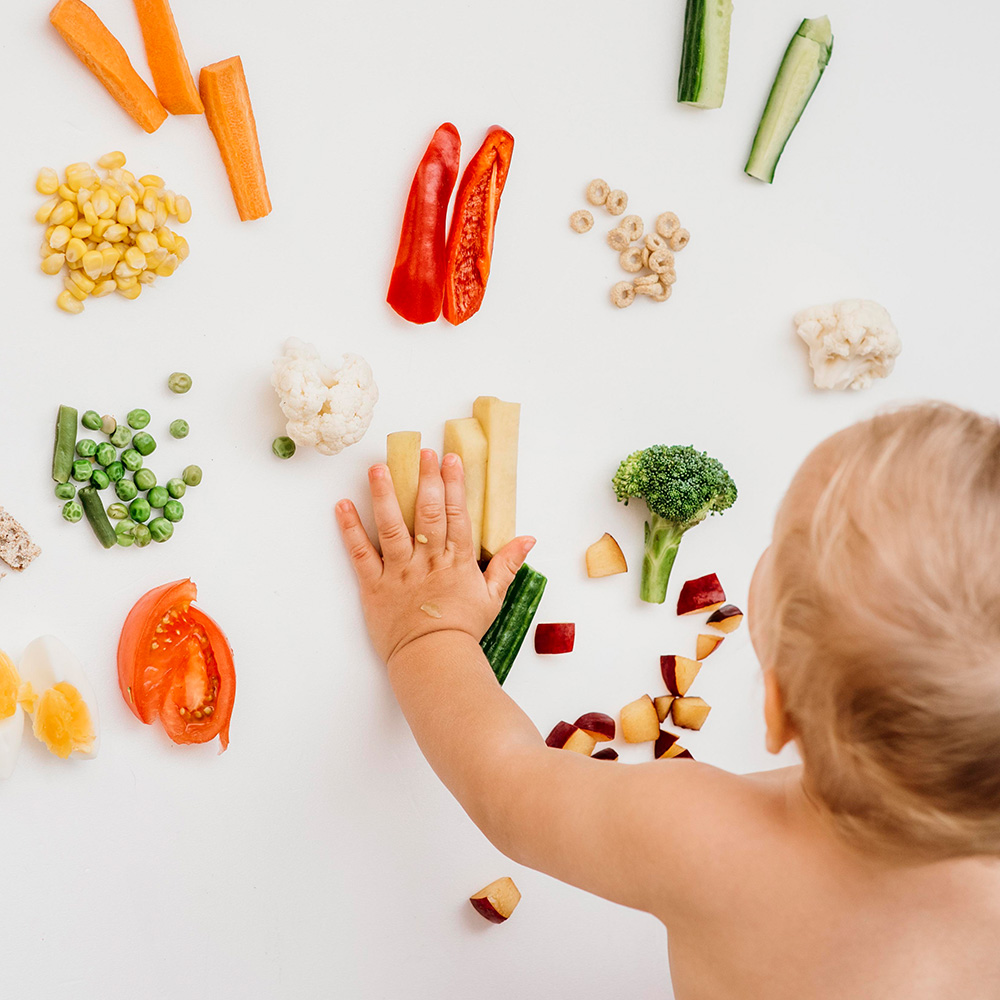

Finger foods ideas
Vegetables – most vegetables are hard when raw, minimal cooking and preparation such as, steaming, boiling, and roasting will be needed to ensure it is soft enough to be served.
- Broccoli
- Carrot
- Sweet potatoes
- Green peas
- Bell peppers
Fruits – most fruits are great to be served as it is without cooking. Just make sure the fruit is ripe enough. For hard fruits, minimal cooking and preparation will be needed to make them soft and safe.
- Banana
- Berries (strawberry, blueberries, etc.) – to be squished/halved
- Kiwi
- Oranges
- Papaya
Whole grains
- Rice balls – easier for little one to hold than grains of rice!
- Pasta – the many shapes and sizes of pasta are great for little one to explore
- Gerber Organic puffs
Protein – meat, poultry, dairy
- Eggs – scrambled, hard-boiled, steamed, your call!
- Chicken
- Ground meat – made into meatballs
- Fish – remove skin, serve pieces/flake of boneless fish
- Gerber Organic Yogurt Melts – simple and easy without preparation!
Honestly, there are so many finger food ideas that you can still explore. Even morning pancakes or muffins can be one of them! As long as they are in the appropriate shape, size and texture, it’s good to go for your little ones to enjoy them.
Reference
1 Finger foods for your baby | BabyCenter [Internet]. BabyCenter. 2022 [cited 5 July 2022]. Available from: https://www.babycenter.com/baby/solids-finger-foods/finger-foods_105
2 The Ultimate Guide to Finger Foods for Baby Led Weaning [Internet]. Baby Foode. 2022 [cited 5 July 2022]. Available from: https://babyfoode.com/blog/the-ultimate-guide-of-fingers-foods-for-baby/#Best_Finger_Foods_for_Baby_by_Age
3 Finger Food For Babies - The Ultimate Guide ・Healthy Little Foodies [Internet]. Healthy Little Foodies. 2022 [cited 5 July 2022]. Available from: https://www.healthylittlefoodies.com/finger-food-for-babies/#Finger_Food_for_Babies_That_Require_No_Cooking_Little_Prep
